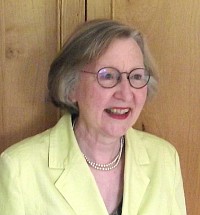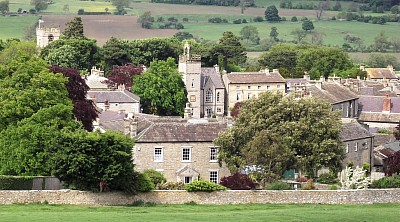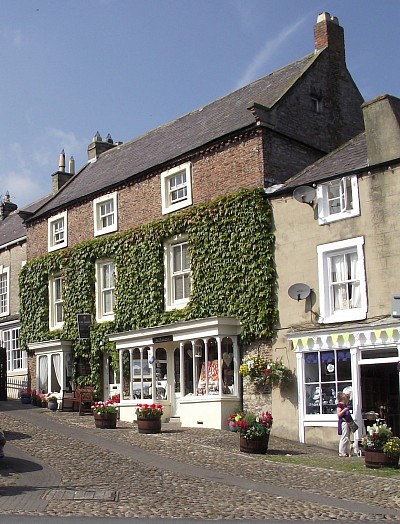Introduction
My name is Marion Moverley and I am a local and family historian and adult education tutor and lived in the Yorkshire Dales until recently but now live down on the Vale of York. I have been researching the history of Middleham for many, many years. I taught Local History at the Middleham Key Centre and am a member of the Upper Dales Family History group. I studied the population of East Witton, Coverham and Middleham for a post graduate degree at the University of Leeds.
My focus is on the families who lived in Middleham, who they were, and what they did. For those interested purely in the connection with Richard III there is a Richard III Society.
Middleham is a beautiful town, famous for the castle and training race horses, I hope you will find some snippets of interest here. There were 623 different surnames recorded in the Parish Registers up to 1900, I can only tell you about a few families, but if you have ancestors who came from Middleham please contact me, and join the Upper Dales Family History Group where you will find others researching families from this part of the Yorkshire Dales.
This web page is still under construction, so please be patient, more information is being added. Photographing the town has been challenging, there are too many cars ! So I apologise if cars are blocking the view of some of the lovely houses.
Trade Directories give an idea of what Middleham was like in the 19th century. Pigot's Directory of 1834 lists the principal inhabitants and shopkeepers. There was a coach which went every Monday, Wednesday and Friday to York via Masham, Ripon and Boroughbridge and carriers carts to Stockton and Leeds. Slater's Trade Directory for 1849 describes Middleham as a comfortable and prosperous town with gentlemen's houses, shops and "the famous school of the turf where so many of our celebrated race horses have received their first training". The coaching inns offered hospitality to the travellers, the Royal Mail from Northallerton to Hawes passed through, and there was a daily connection to Leeds via Masham and Ripon.
The baptism registers for Middleham include 623 different surnames. Many families moved into and out of the town, and only a handful stayed put to give a continuous family line. Some families that were important in the 17th and 18th centuries died out or moved away in the 19th century . Middleham had several professional groups, clergymen, apothecaries, doctors, attorneys or solicitors, excise officers; then there were shopkeepers and craftsmen, as well as shoemakers and tailors, there were plumbers, saddlers and innkeepers - in fact they could provide you with everything you needed.
Families who remained in the town were Bywell - a clear family line stems from George Bywell who was baptising children in the early 1700s up to the end of the 19th century.
Ibbotson - early Ibbotsons were recusants, but a Thomas Ibbotson was parish clerk in the 18th century and witnessed a large number of Middleham marriages.
Langdale - this family were tradesmen, and were tanners, butchers and grocers. Each branch used the same christian names so were identified by their trade.
Metcalfe - present all over the Yorkshire dales, in Middleham some were miners, and some blacksmiths.
Topham - is the most notable family in the town, they originated from Coverdale, and were landowners at Caldbergh and Agglethorpe. A Henry Topham had died at Marston Moor serving in the troop of Colonel Eure. Sometime in the 16th century two branches of Tophams emerged, one became substantial land owners the other ordinary farmers. One son of the Caldbergh Tophams married an heiress from the Craven district, and a line from Kildwick in Craven then came back to Middleham. Christopher Topham who was baptised at Kildwick married Jenny Bulmer of Middleham in 1795 and their children lived in some of the grand houses in the town.
These Tophams were solicitors, clergymen and gentlemen.
Walker - The Walker families in Middleham appear to have been prolific, but there were several different lines. They were grocers, tailors, joiners, masons, shoemakers, wheelwrights, gardeners, one was a collier, and another a farmer.
There was a small number of miners in Middleham, who worked the mines south of the town near Braithwaite, they would have crossed the River Cover by Hullo Bridge. It was a dangerous and difficult job, and details of their conditions were recorded in the inquest held on view of the body of George Canby aged 65 years in 1867 at the house of William Tyler, the Green Dragon in Middleham. George Canby worked at the Braithwaite lead mine, and he arrived at the mine before the other men and descended the shaft on his own, his foot slipped and he fell to the bottom. The shaft was 34 yards deep. He had left to go to work at 6 a.m., and although the previous day the miners had agreed to meet at the blacksmith's shop to sharpen their tools, they found that Canby had gone ahead of them and opened up the shaft, Joseph Mallaby went down first, climbing down ladders for the first part, and then down the wood that lined the shaft, and found the body. It was not usual to descend alone. Canby lodged with a gamekeeper Thomas Cook, near Caldbergh and was buried at Coverham on the 22nd October 1867. What a sad death at the age of 65 years.



